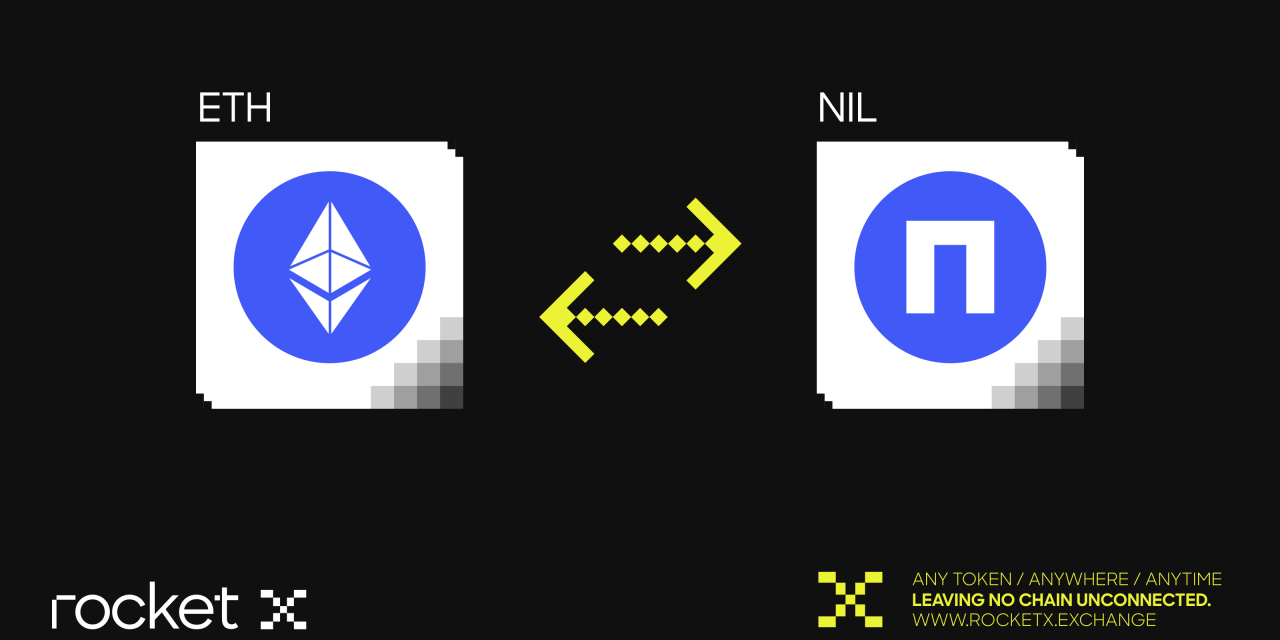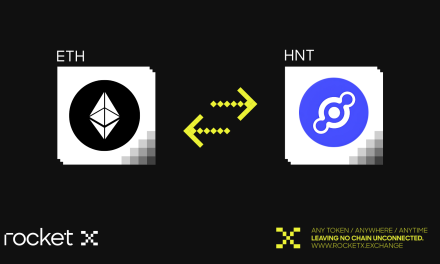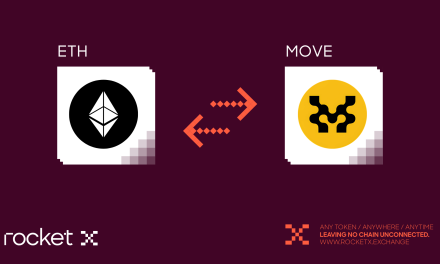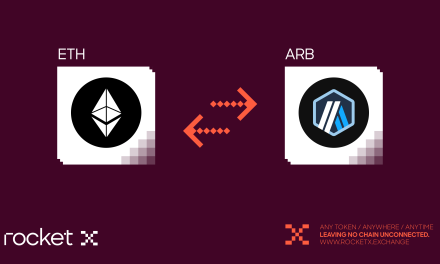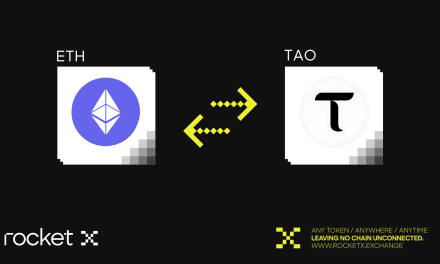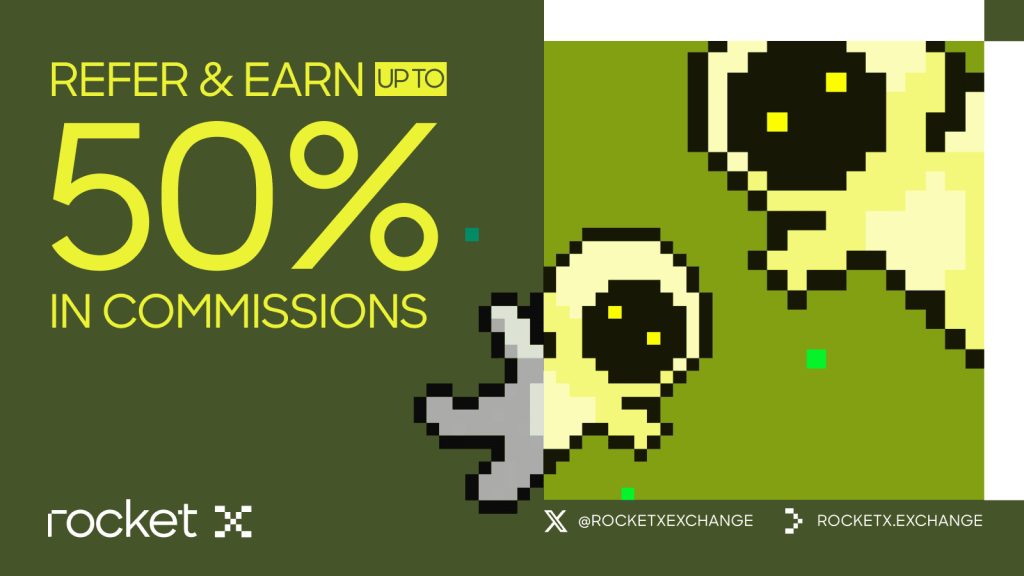
Introduction
In a world increasingly shaped by data, privacy has become a pressing concern. From financial transactions and healthcare records to AI model training and identity verification, sensitive information is everywhere. Traditional systems demand that data be decrypted before it can be processed, leaving it vulnerable to breaches, leaks, and misuse. As the need for trustless digital infrastructure grows, so does the demand for innovative solutions.
Nillion Network emerges as a next-generation solution to this privacy challenge. Unlike conventional blockchain platforms, Nillion is not just a ledger. It’s a decentralized infrastructure that enables blind computation—allowing encrypted data to be processed without ever revealing its contents. Built on advanced cryptographic primitives and designed to handle complex computations securely, Nillion network offers a compelling vision of a safer, privacy-centric internet.
Let’s explore what makes it so unique, how it works, and why its native token $NIL could be a critical asset in tomorrow’s decentralized economy.
What is Nillion Network?
(Founders, Vision, and Key Backers)
Nillion Network is a decentralized computation layer purpose-built for privacy. It functions as a trustless, non-blockchain infrastructure that facilitates blind processing of sensitive data. Through a robust and modular architecture, Nillion enables new use cases in healthcare, finance, AI, and identity that were previously impossible due to data sensitivity concerns.
The network was co-founded by a team of visionary technologists and entrepreneurs:
- Andrew Masanto – Co-founder of Hedera Hashgraph, NFT.com; also served as CMO of Reserve Protocol
- Alex Page – Former investment banker at Goldman Sachs, now CEO of Nillion network
- Dr. Miguel de Vega – A key innovator behind Nillion’s cryptographic breakthroughs
- Conrad Whelan – Founding engineer at Uber
- Slava Rubin – Founder of Indiegogo
- Mark McDermott and Andrew Yeoh – Experienced technologists in blockchain and applied cryptography
The core mission behind Nillion network is to resolve the “security-utility deadlock”—the tradeoff between using data and keeping it private. By enabling blind computation, Nillion allows data to be utilized without ever being exposed. This vision is timely, especially with the rise of AI models that depend on vast, often sensitive datasets.
Nillion network has already captured attention from prominent institutional investors:
- Hack VC, Polychain Capital, Framework Ventures, HashKey Capital, Distributed Global, AU21 Capital, Big Brain Holdings, and Chapter One
- Binance Launchpool (selected as the 65th project)
- CoinList Seed Program (incubation platform for high-potential crypto projects)
The strength of Nillion’s team and backers indicates deep confidence in its technology and long-term potential.
How Nillion Network Works
Nillion is not a blockchain but a distributed computation protocol that leverages Privacy-Enhancing Technologies (PETs) to execute secure computations on encrypted or secret-shared data. Its architecture consists of three primary layers:
1. Petnet (Processing Layer)
This is the decentralized compute engine where encrypted computations are executed. No single node can see the entire dataset. Instead, computations are distributed securely using PETs:
- Multi-Party Computation (MPC): Nillion’s proprietary “Curl” protocol allows multiple parties to jointly compute results without revealing individual inputs. Built on LSSS (Linear Secret-Sharing Schemes), Curl supports complex mathematical logic with speed and precision.
- Fully Homomorphic Encryption (FHE): Allows operations on encrypted data without ever decrypting it. The final output, when decrypted, yields correct results as if operations had occurred on plaintext.
- Zero-Knowledge Proofs (ZKPs): Enables verification of data or statements without revealing the data itself—perfect for identity verification, secure voting, or confidential auditing.
2. Coordination Layer (nilChain)
This Cosmos SDK-based layer handles:
- Payments and fees via $NIL
- Staking mechanisms
- Network governance
- Scheduling and resource allocation
3. Connectivity Layer
Bridges applications, user requests, and external systems to the Petnet layer.
Blind Modules
Nillion network offers modular access points for developers to build:
- nilDB: Privacy-first encrypted database layer
- nilAI: Privacy-preserving machine learning
- nilVM: A virtual machine to build smart applications using PETs, supporting Python and JavaScript
Together, these components create a powerful, flexible, and secure infrastructure to handle even the most sensitive computation tasks.
Everything You Need to Know About the $NIL Token
The $NIL token is the backbone of the Nillion ecosystem, acting as a multi-purpose utility asset that fuels network activity, secures operations, and empowers community governance. Whether you’re a developer building on Nillion network, a node operator supporting the infrastructure, or a token holder participating in governance, $NIL is central to every interaction within the protocol.
Total Supply: 1,000,000,000 tokens
Circulating Supply: 195,150,000 NIL
Market Cap: ~$87.43M (as of latest update)
Token Allocation Breakdown
To ensure healthy network development and community alignment, Nillion has allocated the $NIL token across multiple verticals. Most of the allocation typically comes with cliffs and linear vesting periods between 6 and 36 months, preventing sudden supply shocks and incentivizing long-term contributions.
- Ecosystem & R&D: 26.5%
- Early Backers: 21%
- Core Contributors: 20%
- Community: 16.5%
- Protocol Development: 10%
- Binance Launchpool: 3.5%
- Liquidity: 2.5%
Use Cases of the $NIL Token
- Network Fees: All services on the Nillion protocol—whether secure computation, decentralized storage, or encrypted API access—require payment in $NIL. This creates ongoing demand for the token.
- Staking: Node operators must stake $NIL to participate in the network. This stake acts as collateral, ensuring that all participants are economically aligned and discouraging malicious behavior.
- Delegation: Don’t run a node? No problem. Regular users can delegate their $NIL tokens to trusted validators and earn a share of the rewards—making staking accessible to everyone.
- Governance:Token holders can propose and vote on critical protocol changes—ranging from fee structures and validator incentives to community grants and roadmap upgrades. $NIL gives you a real voice in shaping Nillion’s future.
- Premium Access: Some decentralized applications and enterprise-grade tools built on Nillion may offer exclusive features or access tiers that require holding or spending $NIL.
- Incentives: Network contributors, data providers, and node operators are rewarded in $NIL for their services—building a self-sustaining economy around shared infrastructure.
Future Potential of Nillion Token
The $NIL token holds strong long-term potential as demand for privacy-first infrastructure grows across both Web3 and enterprise environments. As data privacy becomes a global concern, Nillion’s privacy-preserving architecture positions it as a critical enabler for secure, decentralized computation. It allows advanced use cases like federated learning and blind model inference—solutions AI developers increasingly need to train models without exposing sensitive data.
Enterprises in sectors such as fintech and healthcare are also seeking secure compute environments. Nillion delivers this through a decentralized framework that enables private, compliant data processing—making it attractive for real-world adoption. Additionally, its potential as a foundational layer for DeFi, decentralized identity, and DePIN applications gives it a key role in the expanding Web3 ecosystem.
Multichain partnerships with Aptos, NEAR Protocol, Arbitrum, and Sei Network reflect growing cross-network adoption, while its fixed supply of 1 billion tokens and real token utility for staking, governance, and network fees add a strong economic foundation.
While challenges like regulatory uncertainty remain, Nillion’s team, vision, and deep tech stack give $NIL a compelling edge. As the network scales, so does the utility—and likely the value—of the $NIL token, making it a serious contender in the future of privacy tech and decentralized infrastructure.
How to Bridge to Nillion Network and Buy $NIL Tokens
Moving your assets to the Nillion Network and acquiring $NIL tokens is seamless when using RocketX Exchange, thanks to its powerful cross-chain infrastructure.
Step-by-Step Guide
- Visit the Platform
Go to https://app.rocketx.exchange. - Connect Your Wallet
Click “Connect Wallet” and choose your preferred wallet (MetaMask, WalletConnect, etc.). Ensure your wallet is set to the correct source network (e.g., Ethereum, BNB Chain, Arbitrum, etc.).
- Choose Source Network & Token
Under the “From” section, select the network and the token you want to swap from. RocketX supports 200+ networks and assets. - Choose Destination Network & Token
In the “To” section, select Nillion Network as the destination chain, and choose NIL as the token you want to receive.
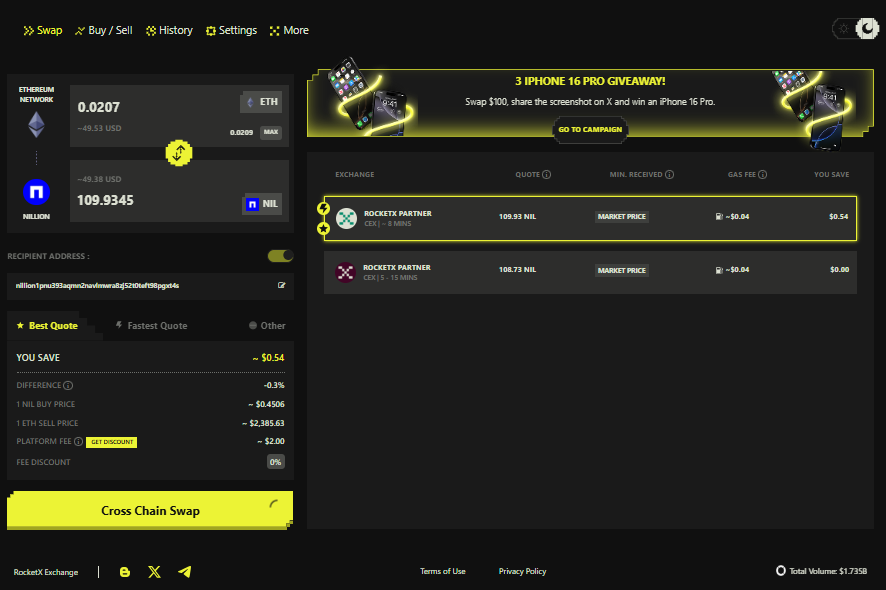
5. Enter Your Nillion Recipient Address
Paste your Nillion wallet address in the “Recipient Address” field. Always double-check your wallet address before proceeding to ensure the funds go to the correct Nillion-compatible wallet (e.g., Keplr, Cosmostation).
6. Enter Swap Amount
Input the amount of ETH or another token you’d like to convert. The platform shows an instant quote and expected output.
7. Confirm Transaction
Review fees, slippage, and timing. Click “Cross Chain Swap” and approve in your wallet.
8. Receive Tokens
Your $NIL tokens will appear in your Nillion-compatible wallet within minutes.
Best Wallets to Store $NIL Tokens
Once you’ve acquired your $NIL tokens, choosing a secure and reliable wallet is essential to protect your assets and interact seamlessly with the Nillion ecosystem. Here are some of the best wallets currently supporting $NIL:
Keplr Wallet: Keplr is one of the most trusted wallets in the Cosmos ecosystem and offers full support for networks built on the Cosmos SDK, including nilChain. It’s user-friendly, feature-rich, and ideal for staking, governance, and interacting with Nillion dApps.
Leap Wallet: Designed with privacy in mind, Leap is a modern wallet tailored for Cosmos-based chains. It’s sleek, secure, and optimized for users who value both ease of use and enhanced privacy.
Cosmostation: Cosmostation offers a battle-tested wallet experience with powerful validator management and governance tools. Known for its security and reliability, it’s a great option for long-term $NIL holders and active network participants.
Hardware Wallets: For those planning to hold $NIL tokens long-term, hardware wallets are the most secure option. Devices like Ledger and Trezor offer cold storage solutions that keep your private keys offline, protecting your assets from phishing attacks, malware, and online threats.
Conclusion
The Nillion Network represents a massive leap forward for privacy, security, and decentralized computing. By blending blind computation with modular architecture and tokenized incentives, Nillion creates a privacy-first infrastructure poised to disrupt multiple industries. With strategic partnerships, strong funding, and a solid roadmap, the $NIL token could emerge as one of the most important assets in the privacy layer of Web3.
And thanks to platforms like RocketX Exchange, accessing this opportunity is just a few clicks away. If you’re exploring the frontier of secure computation, the Nillion Network—and $NIL—is worth paying attention to.

